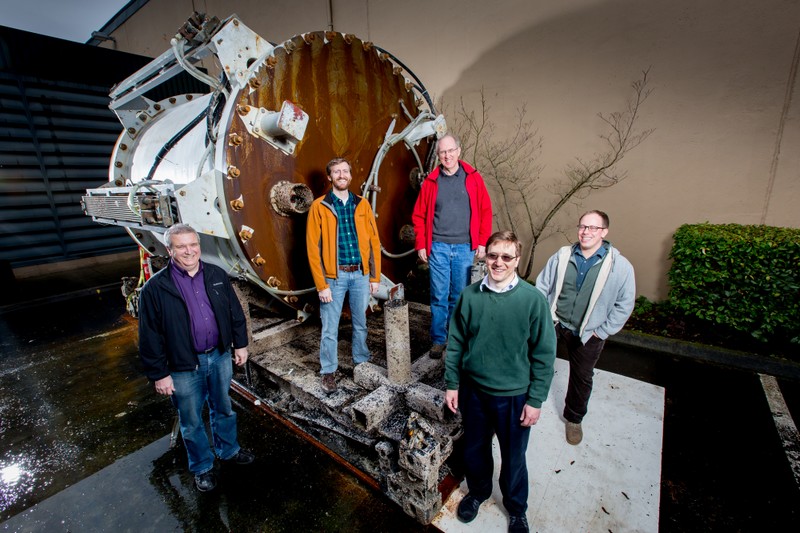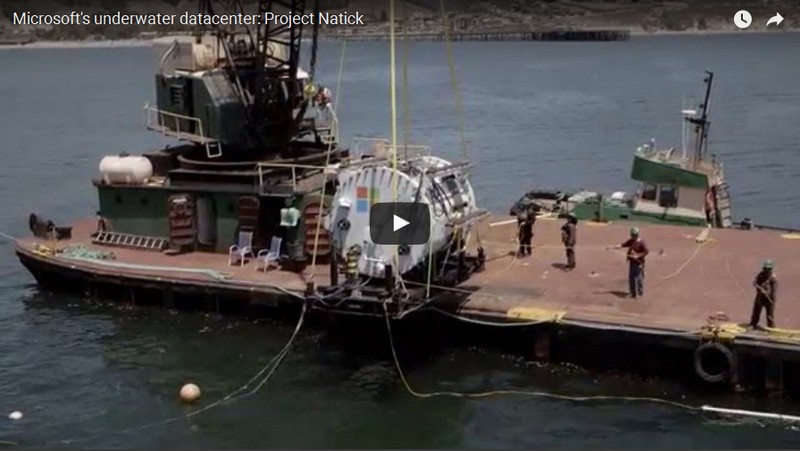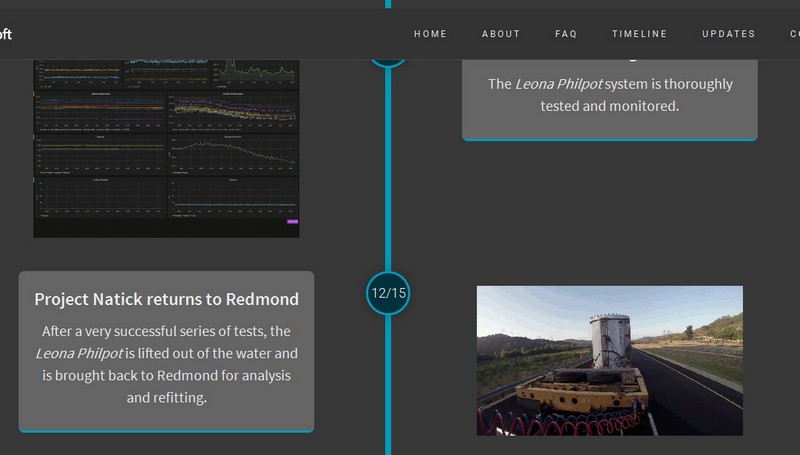Microsoft Dropped a Data Center Into the Ocean, Can You Guess Why?
Microsoft has just recently completed a test that involves the submersion of a data center into the ocean. You might think this is a silly idea as water and electronics are hardly compatible with each other but the reasons behind this experiment actually make a lot of sense. They might even pave the way for a new wave of innovation in the field of data centers and servers.
Project Natick: The Cloud Underneath the Ocean
Referred to as Project Natick, Microsoft ventured in an interesting experiment intended to explore the possibility of operating data centers underneath a body of water, in the ocean off the central California coast near San Luis Obispo to be specific. They submerged a server rack with the computing power equivalent to that of around 300 personal computers into saltwater at a depth of around 30 feet. Of course they didn’t do so without any waterproofing. The server was contained in a watertight steel capsule with a diameter of about eight feet. This container were equipped with around a hundred different sensors to measure, detect, and prevent leaks and dangerous levels of humidity, motion, and other factors that could damage the data center.
Purpose of the Experiment
Dubbed as the world’s first underwater data center, the project was aimed at finding out whether or not underwater data centers is a good idea. Microsoft is studying the feasibility of using the bottom of the oceans as space for servers as well as a readily available cooling system. The idea is that such a setup may make data centers faster, more cost effective, easier to set up, and environmentally friendly. Space, especially in the cities, are not cheap and servers or data centers take up a lot of it. Moreover, these data centers produce a lot of heat and noise so they need to be actively cooled down.
The experiment lasted for 105 days or more than three months. It was originally set for only a 30-day duration but it was so successful that the team decided to observe it further. Microsoft Research corporate VP Peter Lee, in an interview with CNN, even said that they actually ran some customers’ workloads on it. He did not specify which customers these were, though.
Results from the Experiment
As mentioned, the experiment turned out to be very successful. The measurements from the capsule sensors showed that the container was able to hold up to the challenging environmental conditions underwater. Barnacles have covered the capsule but it was able to maintain its structural integrity and prevented water from seeping in. The capsule has already been extracted from the ocean floor for further analysis and refitting.
The results have been very encouraging that Microsoft already has plans of doing larger scale experiments on underwater data centers. They will be submerging a data center that is three times larger for the next test with additional systems to make the setup more environmentally friendly.
Energy Generation from Ocean Currents and Zero Net Heat
Microsoft plans on outfitting the capsule for the next test with a turbine-generator that will harness the power of the currents underwater. The power generated will then be the only power that will be used to sustain the data center. If this becomes successful, Microsoft says that their underwater data center will then be operating at zero net heat since the heat produced by the servers is simply the energy coming from the underwater currents themselves. The data center will still heat up the surrounding waters but this heating is essentially from the water itself so it can be said that the underwater data center has not added heat to the water but only converted energy from the surrounding waters.
Possible Ecological Impact
While the results have been promising so far, there have been no studies yet regarding the possible impact of putting data centers on the underwater marine ecology. Data servers are hot and noisy. They are expected to change the temperatures of underwater habitats and disrupt marine life with the noises they produce and space they occupy. Until such studies are conducted on a larger scale and the results are verified, it can be said that the idea of having data centers at the bottom of the oceans is still far from becoming ready for implementation. Microsoft claims that the noise produced by their test data center was drowned by those of ships and nearby shrimps and crabs but they have not projected the possible noise output if they were to do a large scale deployment of underwater data centers.
There is no conclusive evidence yet that would show that underwater servers are going to become viable or become the thing of the future. However, what Microsoft has done is a vital small step towards the exploration of something innovative and promising. For now, Microsoft’s interesting idea can indeed be considered a good idea although it is still yet to be seen if it can really be viably implemented on a larger, cost-efficient, and more significant scale.



